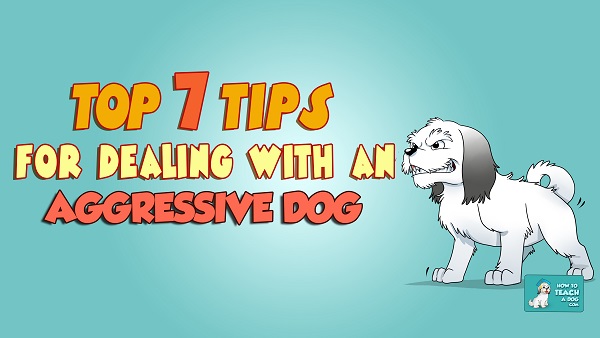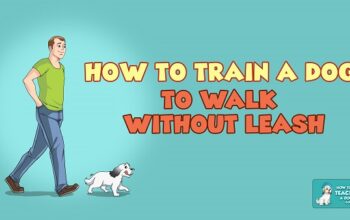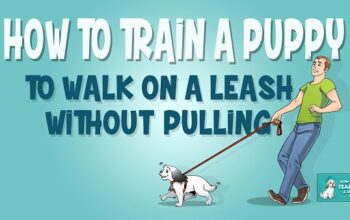
No one ever sets out to own an aggressive dog, and most owners are shocked the first time their cute puppy growls at someone or snaps. In just about all cases the dog has given warning signals over time, but these are often over looked or just not recognized for what they are. An aggressive dog isn’t a bad dog, but he is a dog who needs help in order to modify his behavior and set out on a different path.
Along the way to helping your dog you need to make sure you have realistic expectations when dealing with an aggressive dog. Not all aggressive dogs can be 100% cured. In many cases you’re looking to modify the dog’s behavior and help him to find another way to deal with a situation.
Here are some tips for dealing with an aggressive dog:
1. Identify the root cause for aggression
It’s best to not assume that a dog was abused or mistreated in some way or that he’s attempting to rule the world, and this is why he is aggressive. For most situations, aggression occurs because a dog wasn’t properly socialized, has genetic issues, or hasn’t received any training. Aggression must be correctly identified.
There are many reasons why a dog behaves aggressively, and often times the aggression is a perfectly natural expression for the dog. A dog may be aggressive as a defensive reaction. He may be aggressive due to territorial issues, fear, or a combination of factors.
Not knowing what is driving his behavior may cause a wrong course of action when trying to correct it, and you can accidentally create more problems than you had to start with.
2. Don’t use confrontation or physically punishment
Don’t use confrontation or physically punitive training methods to work with an aggressive dog. You’re likely to not correct the problem and in fact make it worse. For example, we could have a fearful dog who growls when a young child approaches.
The dog is corrected for growling at the child, and so in future episodes when the dog is uncomfortable with the child approaching he may no longer growl because he fears punishment. So the child comes closer, and the dog instead bites.
Now we have a dog who no longer growls to communicate when uncomfortable and will instead go straight to biting.
3. Understand your dog
Learn what stress signals look like in a dog so that you know what your dog may be feeling at a given time. Dogs give off a lot of body language cues that express arousal, fear, anxiety, etc. If you become familiar with what these look like you can learn to identify them in your own aggressive dog.
It’s best to keep a dog, especially an aggressive dog, at stress levels he can easily tolerate in order to better modify his behavior.
4. Don’t put others at risk
Make sure to not put other people or animals at risk when working with your aggressive dog. While you want to help your dog, you can’t risk harm to others either. For example, don’t ever take a non-social dog to a dog park to help learn how to be friends with other dogs. This is so scary for trainers when they hear someone tell them about doing this!
5. Train basic obedience
Training of basic obedience behaviors is the foundation of working with your aggressive dog. It gives you a way to communicate with your dog and achieve a better listening dog over all. This helps immensely when he’s in an aggressive state.
Obedience training doesn’t cure aggression, but a dog who comes when called, gives good eye contact, can sit automatically on cue, knows a solid leave it command, can stay in one spot when asked, and walks nicely on leash goes a lot further when modifying his aggressive behavior.
6. Make use of the right tools
If needed use non-punishment based equipment like head halters instead of choke chains. They also give you a lot better control of the dog especially when initially working with him. Be open to suggestions from your trainer and, if need be, a veterinary behaviorist. They have experience with a variety of dogs, situations, and tools.
You may find that your dog receives benefits from anxiety style wraps or coats, holistic supplements, or even prescription medications. Even if you think an idea is crazy and would never work, be open to it, and ask for more information before making a decision. You just never know what the right tools might be for your aggressive dog.
7. Talk to a professional
Last but not least, seek help at the first sign of a problem. It’s always best to catch the problem early instead of waiting for it to develop into a serious situation. All dogs have beginning signs.
At the first sign that your puppy appears leery of strangers, growls when he sees an unknown dog on the walk, or snaps at you when you reach to pick something up, speak with a professional.
Don’t wait until you physically can no longer walk your dog around the neighborhood anymore or he has bitten someone because it is far harder to correct a well-established problem than one just starting. It’s a good idea to consult with a professional, positive based trainer who has experience dealing with aggression as part of this first step to treatment. Don’t ever be embarrassed to ask for help as aggression is a serious issue, and it could also potentially be a liability.
You may find it initially challenging to work with your aggressive dog, but all dogs can find improvement in their behavior with time, patience, and the right methodology. It’s an incredibly rewarding experience to see your dog grow and improve and become a dog you never imagined when you started.


